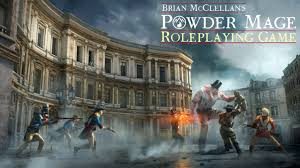This is a continuation of my previous blog post on “Legends of Shadow World“, an adventure series I’m writing for characters level 40-60th. Last night the group attempted Chapter 2 (out of what is now 5 total chapters)! It’s getting longer….
While I thought I would replace the current group with other SW personalities of higher level, I didn’t have time this past week to put together the replacements. (btw: I liked T’vaar Dekdarion but I think he’s still in a coma an assassination attempt by the Cult of Stars). I did end up bumping the characters levels a bit:
Malim Pelax: 43rd lvl Loremaster (Magician)
Sumendar: 46th lvl Navigator –“Guides of Vurn-Kye” (Magician)
Knight-Captain Kroger: 48th lvl Captain of the Sun Guard (Lightbringers of Phaon)
Chomen Drah: 50th lvl Priest of Iorak
Jan Jo’drin: 54th lvl Changramai Warrior
The biggest change was allowing Chomen access to his 50th lvl Spell “Master”. (this is one of a few allowances I’m making while using RM2) All of the characters were effective, but the Navigator felt constrained due to his organizationally mandated neutrality. I may need to replace the Navigator in the group and just have the PCs use Navigator services when needed.
Chapter 1 introduced some environmental challenges and restrictions (Essaence Fluxuations) while Chapter 2 has different restrictions, this time on Channelers. The PCs were already depleted by Chapter 1 and Chapter 2 occurs immediately so there is no time for the group to “recharge”. C2 is more of a traditional dungeon crawl, with traps, guardians etc. For the most part, the group progressed slowly but steadily, but the challenges continued to erode their resources. The final confrontation proved to be a surprise–there are RM creatures that are incredibly dangerous to even high level characters! And no, they are not Shards.
While the players followed a fairly directed route that I sketched out, I’m going to flesh out the rest of the complex for the eventual published product. I think it’s going to be an amazing place to explore!
I think my biggest take away: even though there is lots of talk about high level spell casters having an advantage over non-spell users at higher levels, the reality is that casters better get good at some type of combat skill! Large numbers of semi-powerful creatures can overwhelm and defeat the most powerful caster and smart opponents will target casters who try and stay back and cast spells. (Isn’t that always how PCs beat tougher opponents?)
So far, I’ve been pleased with how the RM2 system rules are holding up at these high levels but a bit sad my group is back using RAW rather than my own simplified system. (although we are using the simplified encumbrance rules). My players and I discussed the differences playing this in RM2 versus our normal SW campaign using our own ruleset (SWARM). Here are some thoughts:
- Set HPs. We adopted Peters idea of set hitpoints and eliminating Body Development. The players liked having a lot more HPs at lower level, but now wonder if it would be better to have Body D back for these high level adventures! Ha, the grass is always greener!
- BASiL. RM2 and most iterations just give spell casters too many spells. A 50th lvl caster could conceivably have 25 lists and over 400 spells. By 15th lvl, most casters will have all the Open and Closed, the only differentiation being Base Lists. The players like having less, more distinct, more specialized and more powerful spells that BASiL allows.
- Unlimited Rank Development. The group would have liked to have unlimited rank development back. A fighter could have 200+ skill ranks in a weapon. Thats a 200+ OB, but more importantly we use # of skill ranks to offset combat maneuver penalties (not Combat Specializations). So a Fighter (or Monk) with 200 ranks could engage 4 opponents without any OB penalty (-50 per opponent, but doesn’t take into effect position penalties). Or parrry most missile weapons or engage in multiple attacks against several opponents etc.
- Meta-Skills. By 50th level, you HAVE to bake in meta-gamer effects and assume powerful characters will just know things and be good at things. Fewer meta-skills lends itself to higher level gaming.
- “Level-less” gameplay. We have been using “Stats as Skills” which are basically level agnostic. The players like the improvements that a level based system gave them, but agreed it didn’t make much sense.
- Magic Power rules. I nerfed Daily Items quite a bit, so the players liked having Daily items that didn’t require them to provide the powerpoints!
- Great Role-Playing. Having the group adopt pre-gen characters allowed them to stretch a bit without the emotional attachment they might have with their own custom built characters. Out of the 5 characters the group favorite for roleplaying was Sumendar with Kroger coming in a close second! In terms of efficacy, guess who was the most potent character?










